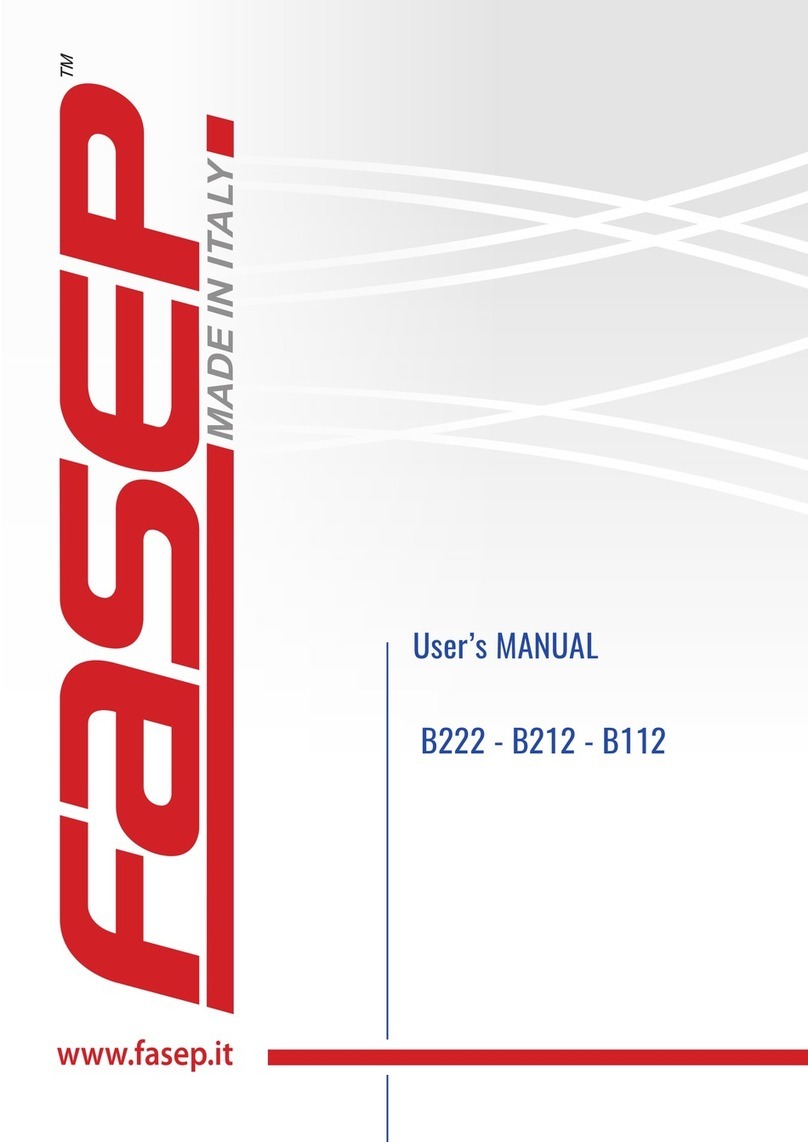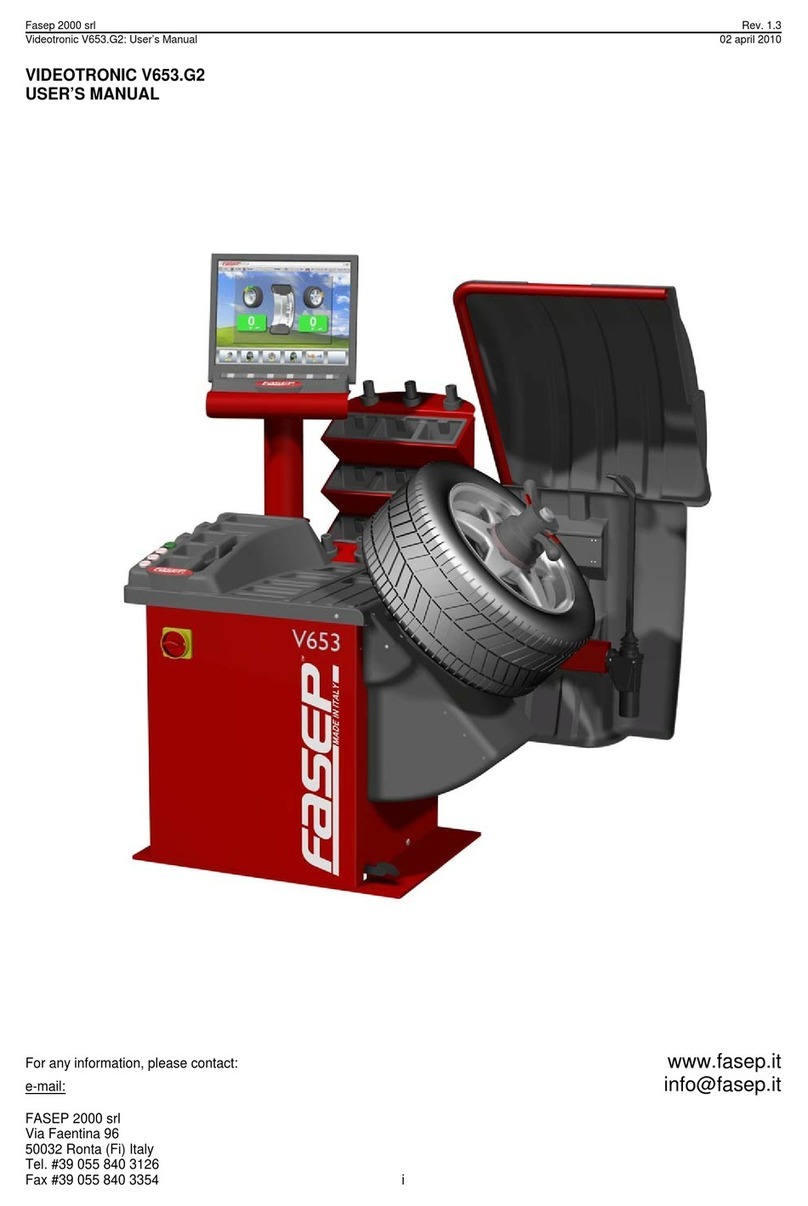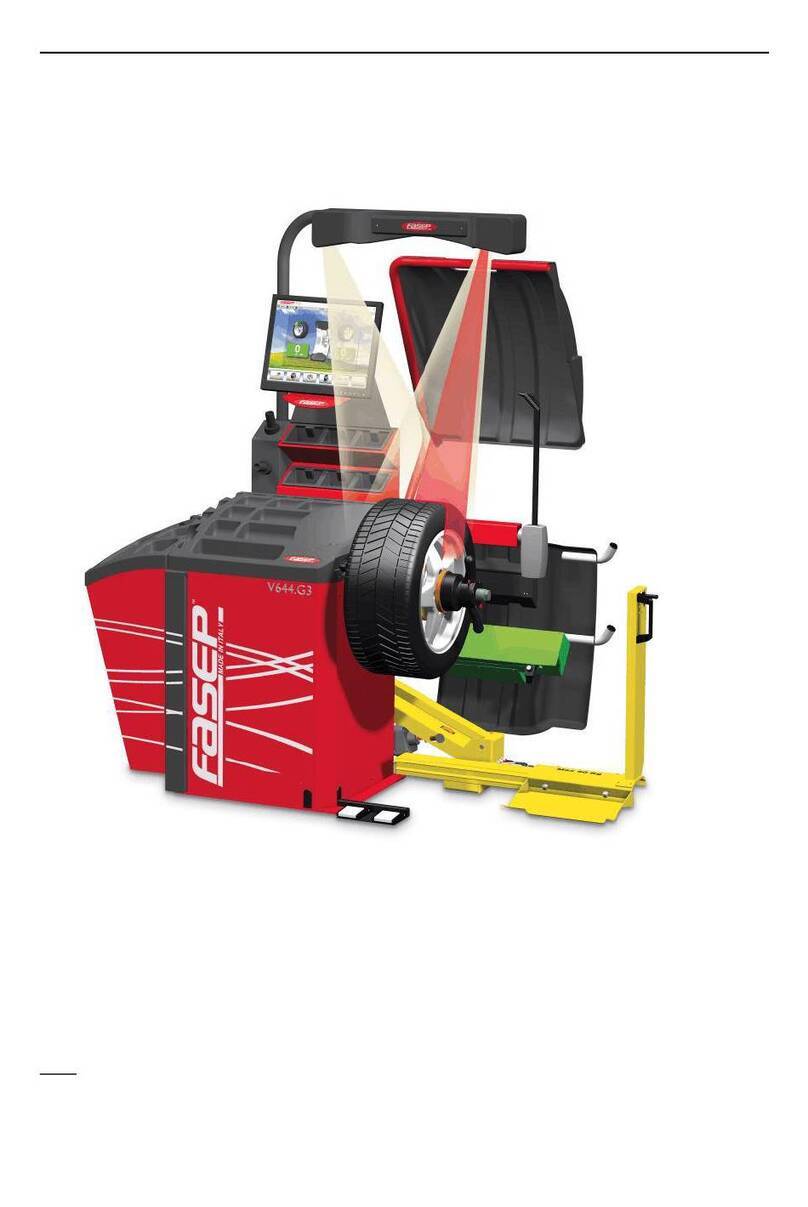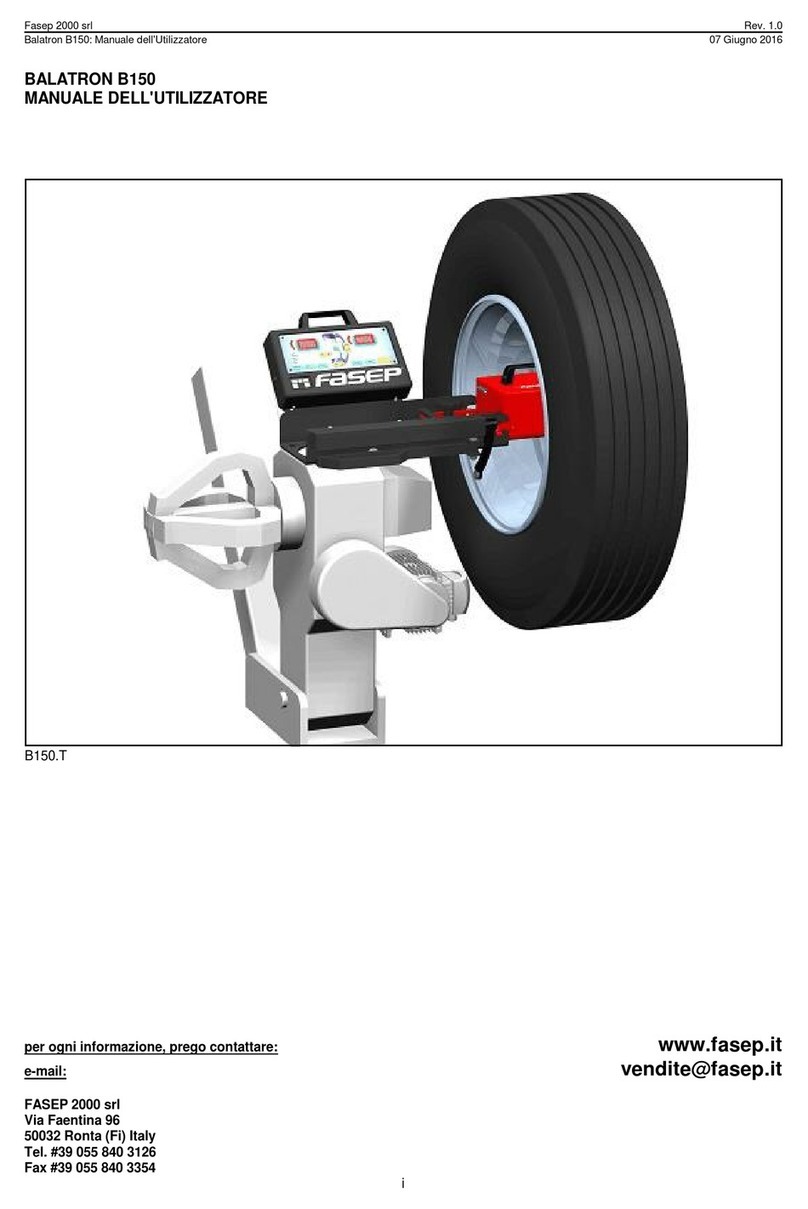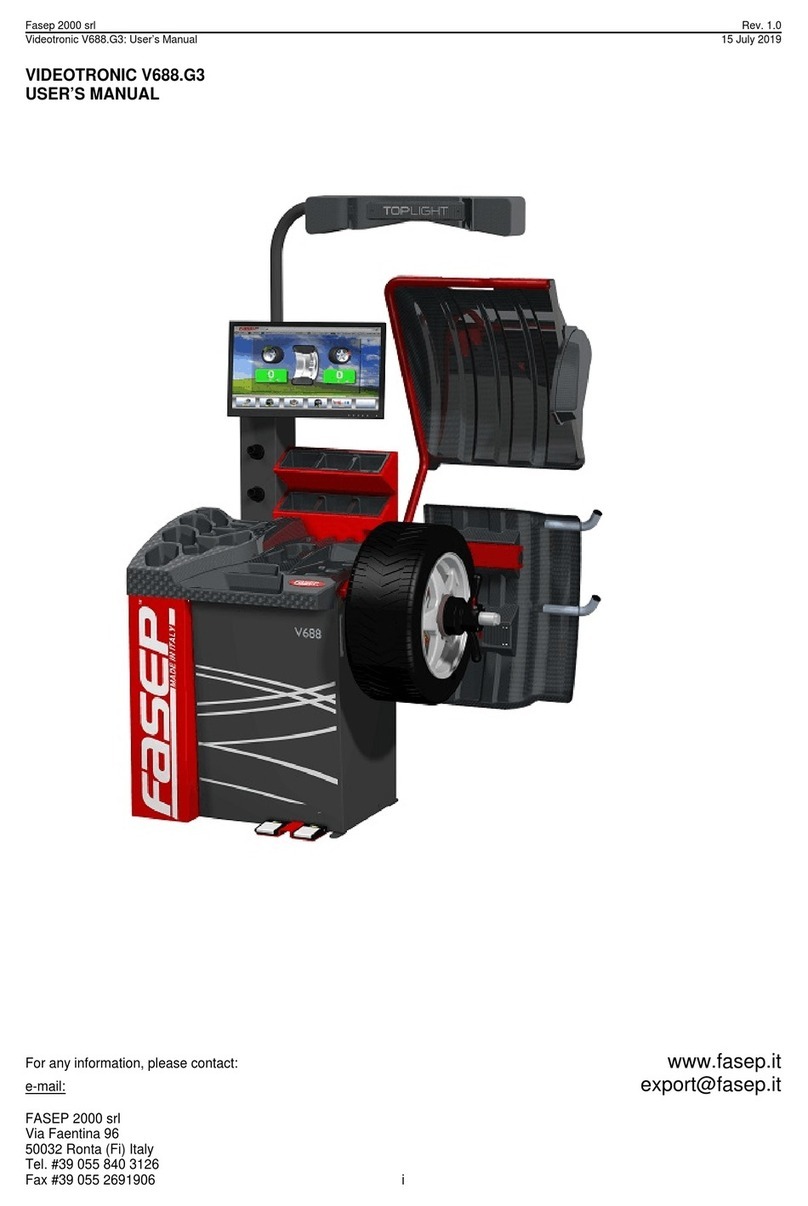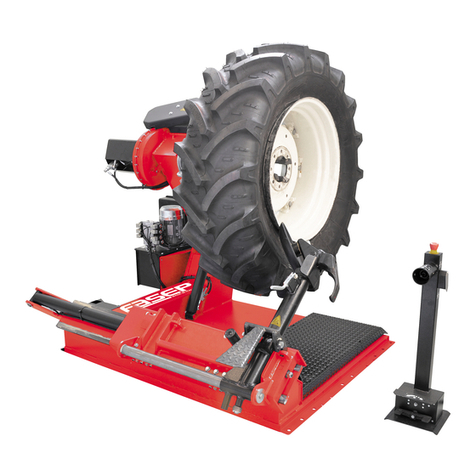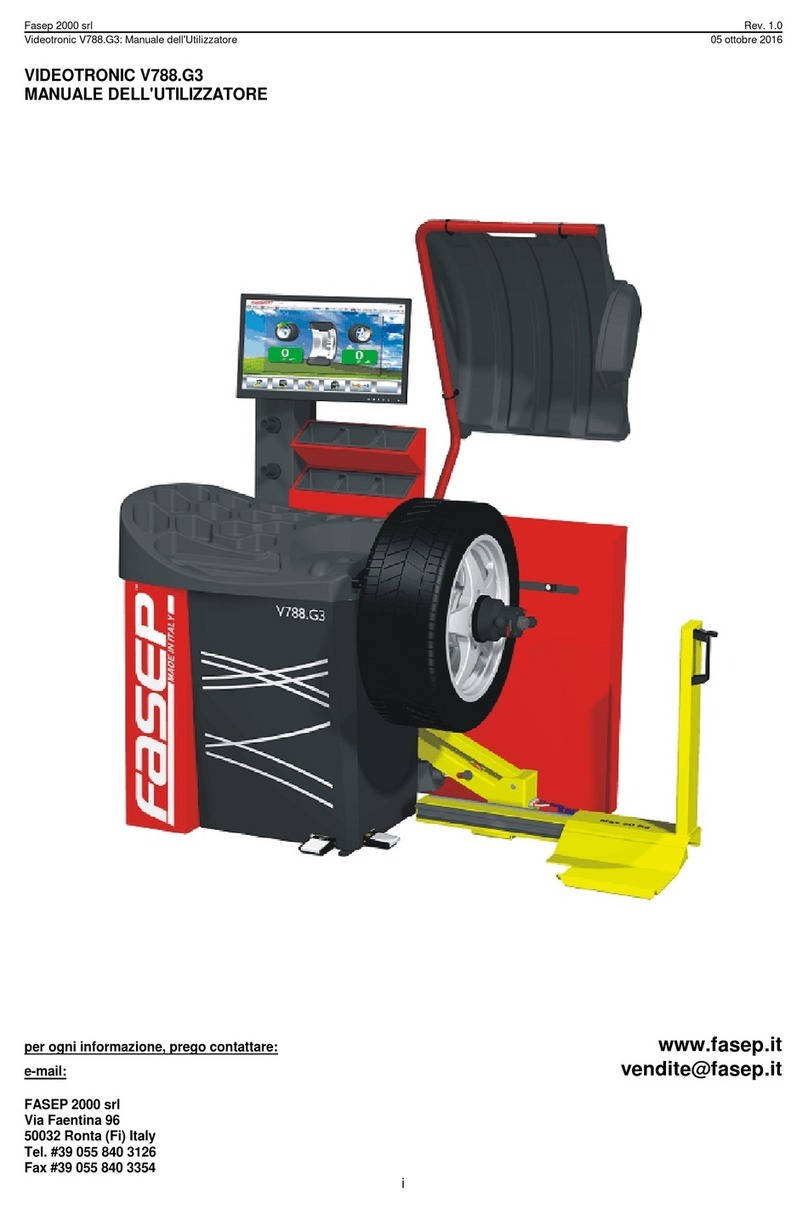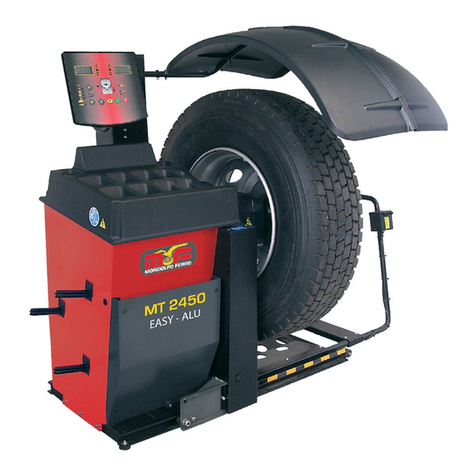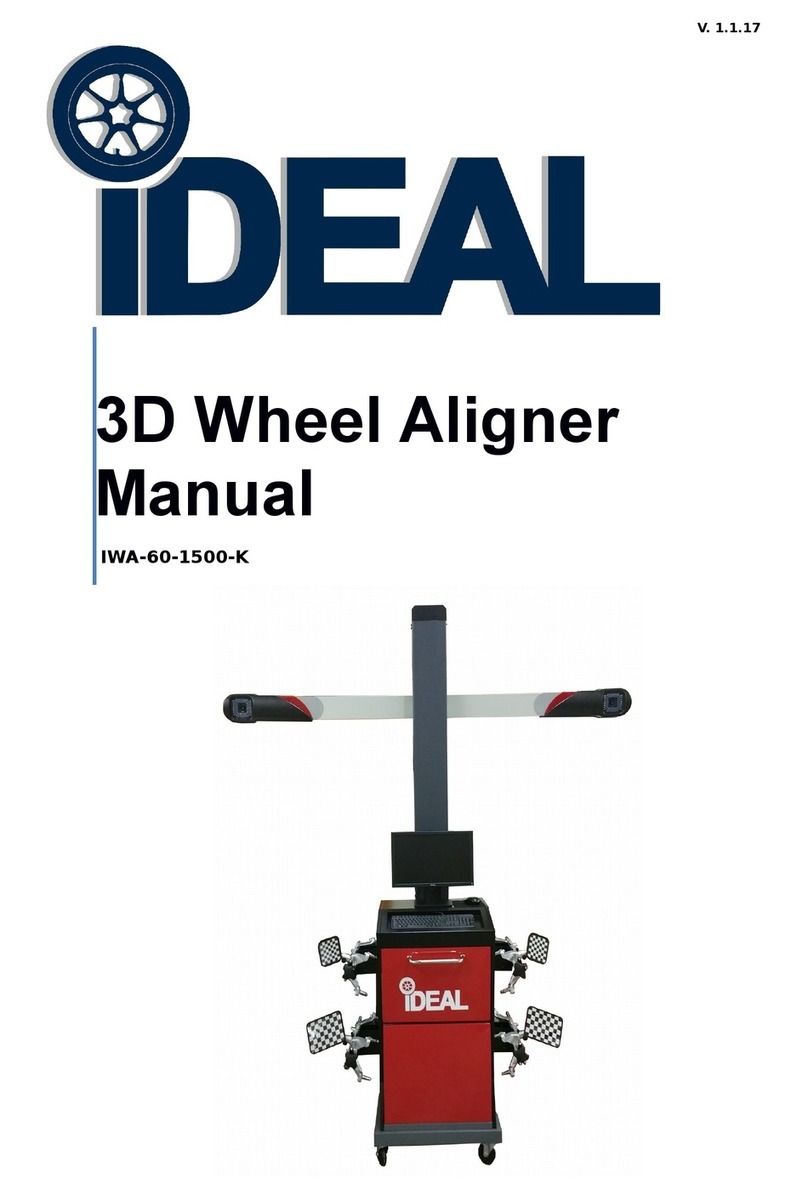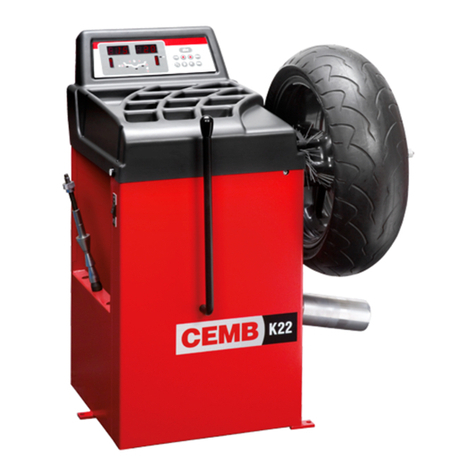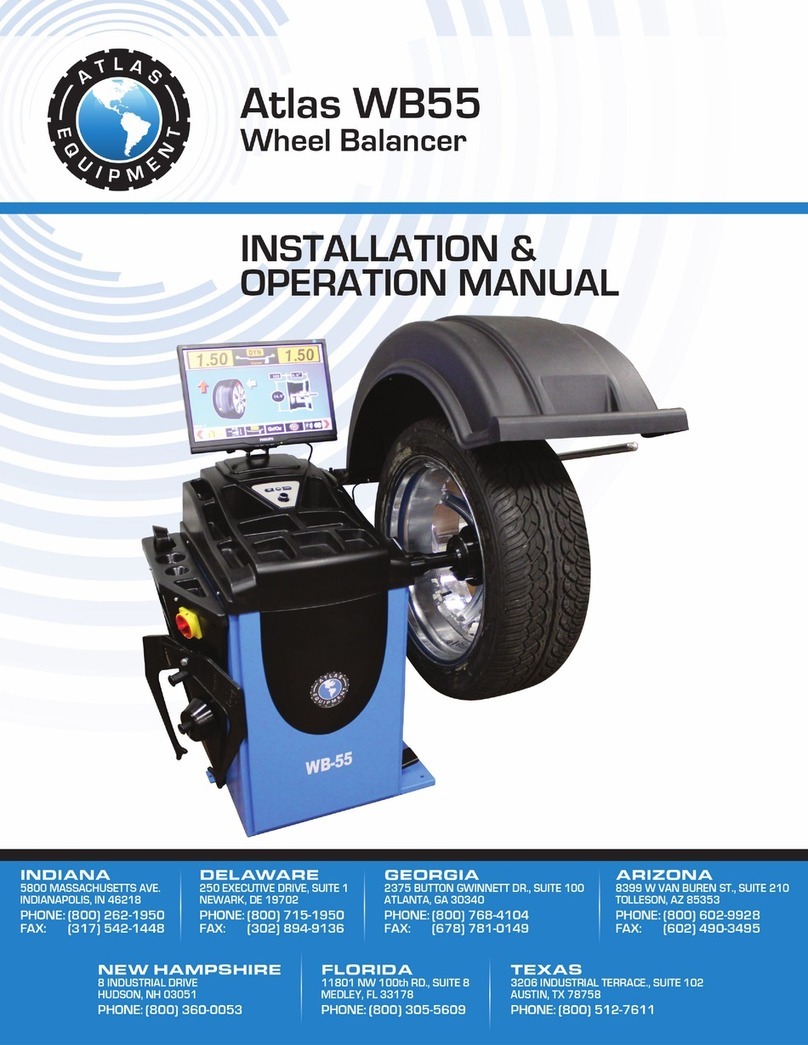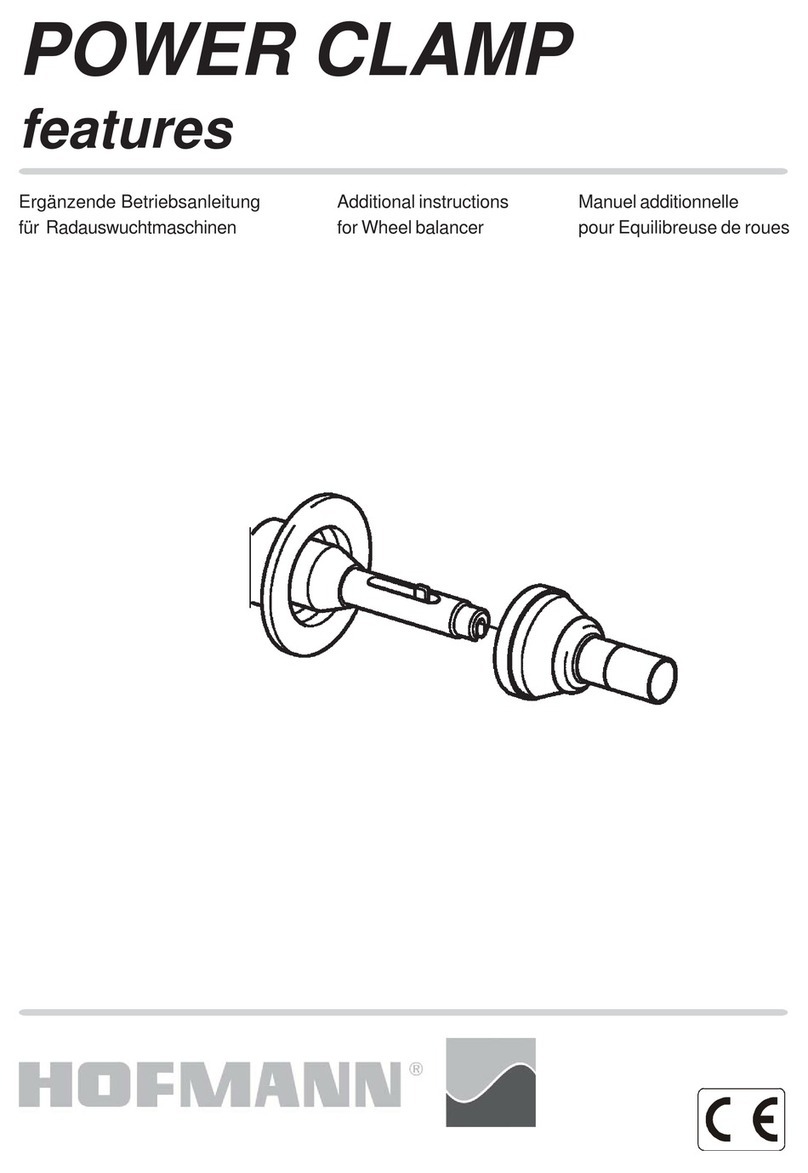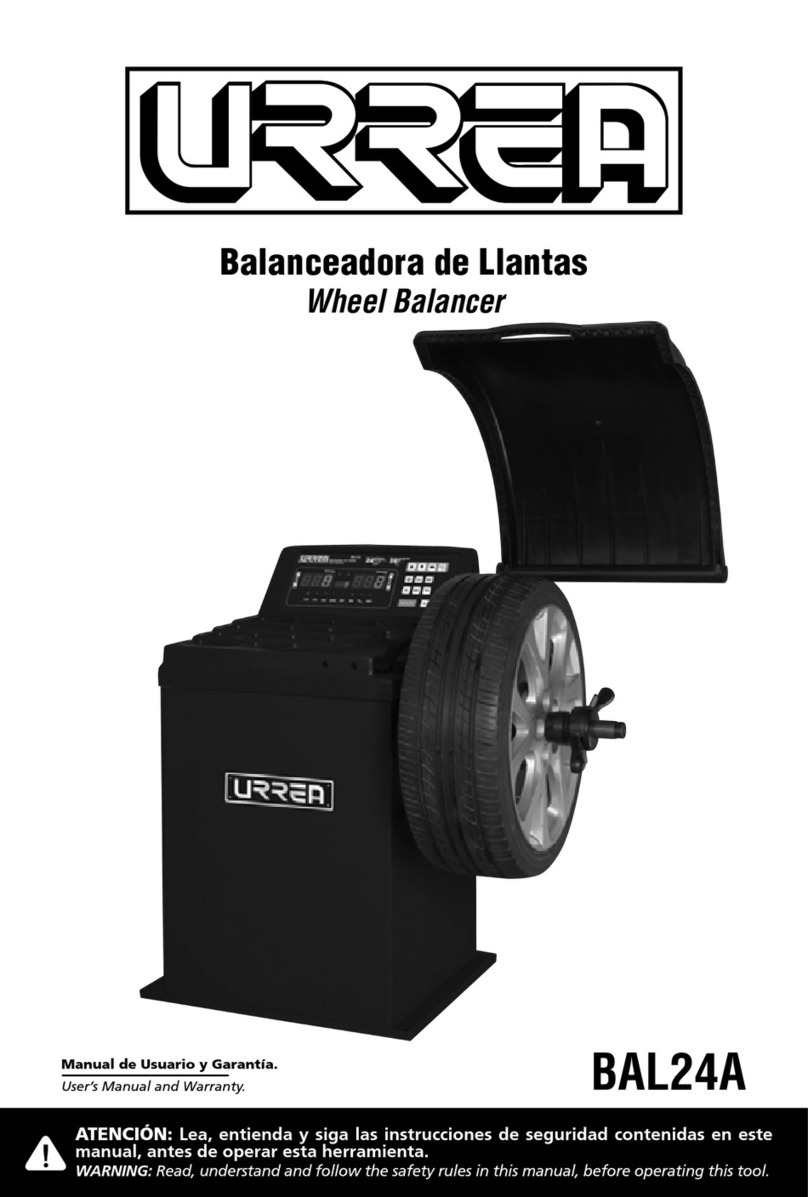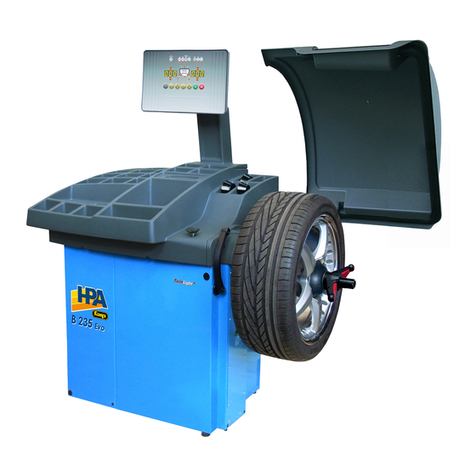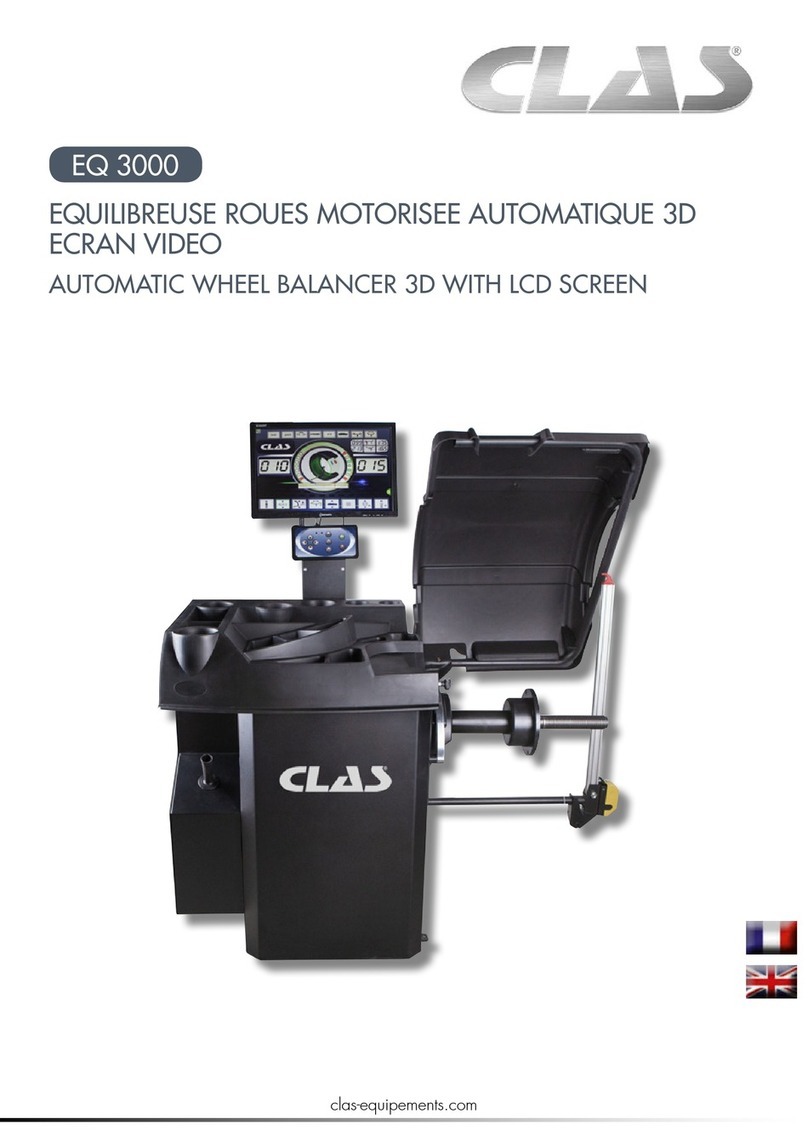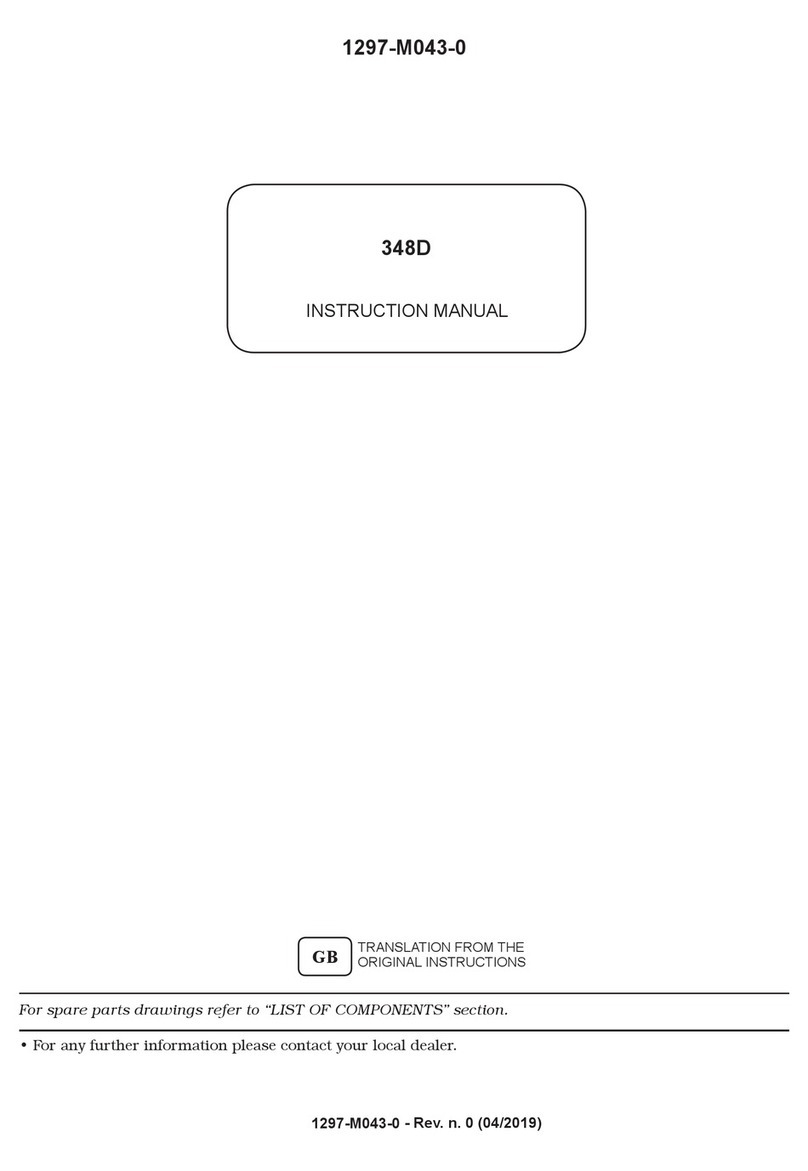
Fasep 2000 srl Rev. 1.1
Balatron B350.G3 10 September 2012
iii
ORIGINAL INSTRUCTIONS
TABLE OF CONTENTS
WARNING .......................................................................................... ii
SYMBOLSANDCONVENTIONS ........................................................................ ii
1 PRESENTATION ............................................................................1-1
1.0 Intended Use .......................................................................1-1
1.1 Definitions .........................................................................1-1
1.2 Lifter - Intended Use .................................................................1-2
2 INSTALLATION .............................................................................2-2
2.1 Movingtheunit......................................................................2-2
2.2 Assemblingtheunit ..................................................................2-2
2.3 Installation .........................................................................2-2
2.4 ElectricalHookup....................................................................2-2
2.5 Aircompressed .....................................................................2-3
3 USETHECONTROLPANEL ..................................................................3-1
3.1 Meaning of keys at the keyboard ........................................................3-1
3.2 Meaning of Led Indicators .............................................................3-1
3.3 Useofthelifter......................................................................3-2
4 CALIBRATION ..............................................................................4-1
4.1 How to calibrate the Wheel Balancer B350-T ..............................................4-1
4.2 How to calibrate the Wheel Balancer B350-TC .............................................4-2
4.3 How to control the calibration of Wheel Balancer B350-T .....................................4-3
4.4 How to control the calibration of Wheel Balancer B350-TC ....................................4-4
5 MEASUREMENTANDCORRECTIONOFUMBALANCE ............................................5-1
5.1 Placing the wheel on the wheel balancer ..................................................5-1
5.2 How to compensate umbalance of flanges using AFC function .................................5-1
5.3 Input of Rim Dimensions (trucks) ........................................................5-2
5.4 Detecting and correction of the umbalance ................................................6-1
6 HOWTOOPTIMIZEUMBALANCEOFTHEWHEEL................................................7-1
7 HOW TO USE SPLIT WEIGHT FUNCTION .......................................................8-1
8 SPECIAL FUNCTIONS MENU ..................................................................9-1
8.1 Enterinthespecialfunctionsmenu......................................................9-1
8.2 Diagnostic sensors menu ..............................................................9-1
8.3 Statisticmenu ......................................................................9-1
8.4 UserSetup.........................................................................9-1
APPENDIX ........................................................................................ A-1
A: TechnicalData ............................................................................. A-1
B: Environmental Data, Safety Features and Requirements ............................................ B-2
C: Errors and Malfunctions recognized by the Computer ............................................... C-2
